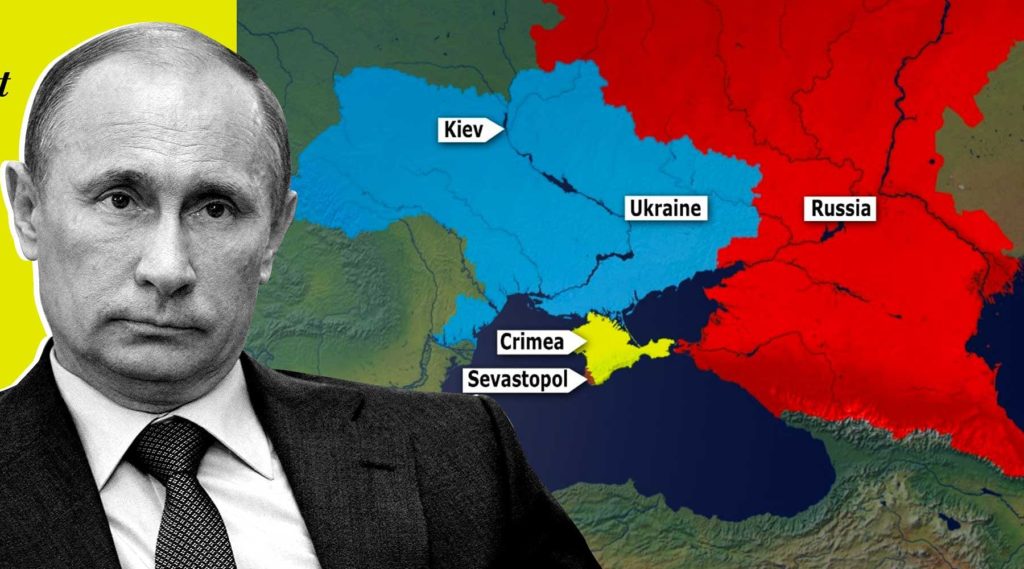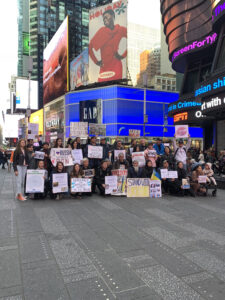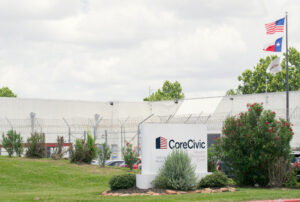The Inevitable War: Putin’s Obsession with Ukraine
As the world continues to watch in horror the war crimes committed by Russia, various narratives have emerged to explain the current conflict. In this article, the Russian narrative will be the focus.

Image Credit: The Quint.
Disclaimer: This article was written on March 1, 2022. Russia’s invasion of Ukraine is an ongoing conflict and this article may not reflect the most recent updates.
In the early morning of January 25, 2022, Russian President Vladimir Putin initiated the first European land war since World War II with his invasion of Ukraine. This has come after months of Russian military build-up along Ukraine’s borders and the United States’ repeated warnings about a possible invasion. Currently, the major cities of Kyiv and Kharkiv are under heavy Russian fire, and estimates of the total number killed are difficult to determine. Although talks between Ukraine and Russia earlier this Monday near the Belarusian border, there is no indication that these talks will lead to Putin withdrawing his forces. As the world continues to watch in horror the war crimes committed by Russia, various narratives have emerged to explain the current conflict. In this article, the Russian narrative will be the focus. By focusing on Russian-Ukrainian relations since the early 2000s it becomes clear that the current war is an inevitable byproduct of historical events and careful planning.
________
WHY IS RUSSIA WILLING TO RISK WILLING TO RISK GEOPOLITICAL AND ECONOMIC UPHEAVAL?
To begin to understand the current war, Putin’s obsession with Ukraine must be explained. Ironically, Putin provides some of the necessary answers in his 2021 publication “On the Historical Unity of Russians and Ukrainians.” Putin has made it explicitly clear that Ukraine belongs to Russia and the West should not interfere. Invoking ethnonationalism, Putin claims that Russians and Ukrainians are “one people- a single whole” and blames the West for Ukraine’s separation from Russia and degradation of state affairs. Putin also stated that “true sovereignty of Ukraine is possible only in partnership with Russia.”
But when did this obsession start?
When Putin succeeded former Russian President Boris Yeltsin in 1999, he started to backtrack on some of the democratic initiatives of the Yeltsin era. The post-Soviet status quo in Eastern Europe was one “that [Putin] never accepted,” says Fyodor Lukyanov, editor in chief of Russia in Global Affairs, a Moscow-based foreign policy journal. “It ate at him. He believes Russia was treated [by the West]as a second-class citizen after the Soviet Union fell.” Seeing the Western expansion of NATO as a significant threat to Russian security, Putin created contingency plans in some post-Soviet blocs. In Belarus, Putin diplomatically and economically supported the unpopular authoritarian President Alyaksandr Lukashenko (who is still in power today) to prevent the rise of a pro-Western government, thus ensuring that Belarus would not join NATO. Hoping to mimic his ‘success’ in Belarus, Putin set his sights on Ukraine.
Ukraine holds the world’s largest ethnic Russian population outside of Russia itself. To Putin, securing the 2004 Ukrainian election and installing another pro-Russian government meant that Russia’s security and influence would be more secure. Putin’s logic was that should the 2004 election result in a Western-friendly government, it would imply that Russia’s form of governance was unsustainable. It would only be a matter of time before Russia faced domestic unrest and the West moved in. To prevent this from happening, Putin supported Viktor Yanukovych, instead of Viktor Yushchenko, who sought Euro-Atlantic integration. If Yanukovych won, Russia would not have to worry about NATO expansion.
However, Putin failed miserably.
Putin severely miscalculated Ukraine’s public outcry towards the highly disputed presidential election. Yanukovych won illegally despite multiple polls showing that Yushchenko was the clear winner. Known as the Orange Revolution, over a million Ukrainians protested the results. This eventually led to a revote by the Ukrainian Supreme Court with Yushchenko being declared the official winner.
To Putin, this was a massive loss. Even though Yuschenko eventually became president in the next term, the damage was done. Putin’s entire attitude towards the democratic world shifted. Putin blamed the West for supporting Ukrainian protests and believed that such support was indicative of the West’s desire to change the Russian government. In other words, he viewed the potential of a fledgling democracy in Ukraine as “a direct challenge to his authoritarian regime and recognizes that Ukraine’s historical closeness to Russia makes this threat particularly acute.”
In November 2013, Ukrainians again found themselves protesting to remove Yanukovych, who had won the election in 2010. Yanukovych had suspended plans to sign an economic association agreement with the European Union, sparking massive protests. Known as the Maidan Revolution, security forces were unleashed to handle the upheaval, and special police snipers killed almost 100 protesters. Eventually, in February 2014, Yanukovych fled Kyiv, and the Verkhovna Rada, Ukraine’s parliament, elected an acting prime minister and acting president, who “promptly declared their goals of signing the association agreement and bringing the country closer to Europe.”
Learning from his early mistakes, Putin responded to the new government by using military force to seize Crimea and salvage the influence Russia lost in Ukraine. He then illegally annexed the peninsula in March 2014. In April, fighting broke out in the Donbas region, “as Russian security forces led, funded and armed a “separatist” movement that was, in reality, another Russian attack on Ukraine.”
The Donbas region, which contains Luhansk and Donetsk, has since been illegally annexed by Putin.
The events leading up to the current war prove that to Putin, Ukraine remains unfinished business. Although Ukraine has long been subjected to Russian influence and force, Putin’s policy has made it evident that Russia would never allow Ukraine to ally itself with the West. Even after invading Crimea, Putin remained unfazed by the sanctions the West placed on him because losing Ukraine meant losing Russian security.
However, Crimea did teach Russia a valuable lesson. The sanctions placed during the Crimea invasion taught Putin the dangers of relying on foreign countries’ currencies for world trade. As a result, Russia began buying a steady stream of gold in order to decouple themselves financially from the global reserve currency system. Moreover, Putin’s Central Bank of Russia (CBR) made a statement that it “is ready to take all necessary measures to maintain financial stability” and has set up measures to protect credit institutions from severe market changes up until October 2022. Currently, the CBR also holds $640 billion in foreign exchange reserves and Russia’s sovereign debt is “largely impervious to bond market vigilantes thanks to the share of foreign creditors falling below 20%.” In short, after Crimea, Putin bought Russia enough time to continue waging military operations against Ukraine without being severely affected by sanctions from the West.
Russia’s long history with Ukraine coupled with Putin’s economic preparedness has allowed Putin to do as he sees fit and, ultimately, decide Ukraine’s fate.
________
WHAT CAN THE WEST AND UKRAINE DO?
Although talks between Ukraine and Russia have already begun, there is no indication that those talks will lead to Putin withdrawing his forces. In fact, it is unlikely. When we consider Putin’s military history, there is one fact we must remember: Putin has never lost a war. In Chechnya, Syria, Georgia, and Crimea, Putin succeeded by establishing clear military objectives and following them through. At this time, it appears that the Ukrainian crisis will yield a similar conclusion. Putin’s continual distrust of Western politics makes it unlikely that he will withdraw his troops anytime soon.
In reality, there are only three options left at this stage of the war.
As Sergei Karaganov, who sits on Russia’s Council on Foreign and Defense Policy, put it: “Confidence could start to be restored only when basic Russian interests are met.” The first option is for the West to consider giving Russia a legal guarantee, one signed by several key NATO countries, that Ukraine will remain permanently neutral. Russia pushed for this previously in multiple discussions with the US, while the latter provided counter proposals on issues related to confidence-building measures and arms control. The US and NATO severely underestimated Putin’s willingness to go to war. As a result, concessions might have to be made to prevent Ukraine from falling completely under Russian control.
Should the West forego the first option, the second option is to continue sending weapons to Ukraine.. As Sergiy Kyslytsya, the Ukrainian ambassador to the UN, put it in an emergency UN General Assembly meeting on February 28, 2022: “If Ukraine does not survive, then the UN will not survive.” In response, France, Belgium, Portugal, Netherlands, Czech Republic, the United States and Germany have either sent or promised to send military aid to Ukraine. To avoid a war with Russia, the only military support that the West can continue to provide, outside of lobbying, is defense supplies. Pursuing this option would allow Ukraine to continue fighting Russian forces more effectively but does not guarantee an end to the conflict.
This leads to the third option: Ukraine’s surrender. Ukraine’s military is more adept to face Russia now than it could in 2014. However, this doesn’t mean they will win. It is heroic for Zelensky to proclaim to the world that “We will not put down weapons, we will defend our state, because our weapon is our truth.” In reality,Ukraine has a finite set of manpower and resources. Even if Ukraine receives the required defense supplies, there is no guarantee that Putin will not resort to nuclear war considering he just issued a directive to increase the readiness of Russia’s nuclear weapons. Moreover, Chechnyan fighters are joining the conflict and Belarus has shown a willingness to defend Russia. Consequently, Ukraine will be in an even tighter spot. In the end, Ukraine has a choice: surrender or die as heroes.
For now, none of us will know what will result from the talks between Russia and Ukraine. What we do know is that Ukraine cannot fight Russia alone for long. Both Ukraine and the West will have hard choices to make, ones that will impact the international system for years to come.
Elizabeth Jefimova (she/her) is a first-year student MA student candidate in NYU’s International Relations program with a concentration in International Law. She received one BA in History and another in Chemistry from Brooklyn College in 2019. Following graduation, she received an MA in Oral History from Columbia University, where most of her work centered on veterans. At NYU, she is looking to study the impact that the United States security assistance programs play in fragile state reformation, particularly in Syria. Her other research interests include examining the role that Russia plays in the Middle East. In her free time, Elizabeth enjoys watching true crime documentaries and reading fantasy/adventure series similar to Game of Thrones.







Very interesting article! I agree with the Author on every statement she made! Lisa presented this difficult situation with 100% accuracy!
Thanks for making sense of the current crisis by succinctly providing the historical context. There’s no shortage of news coverage but your post provided much needed clarity. It’s so timely!